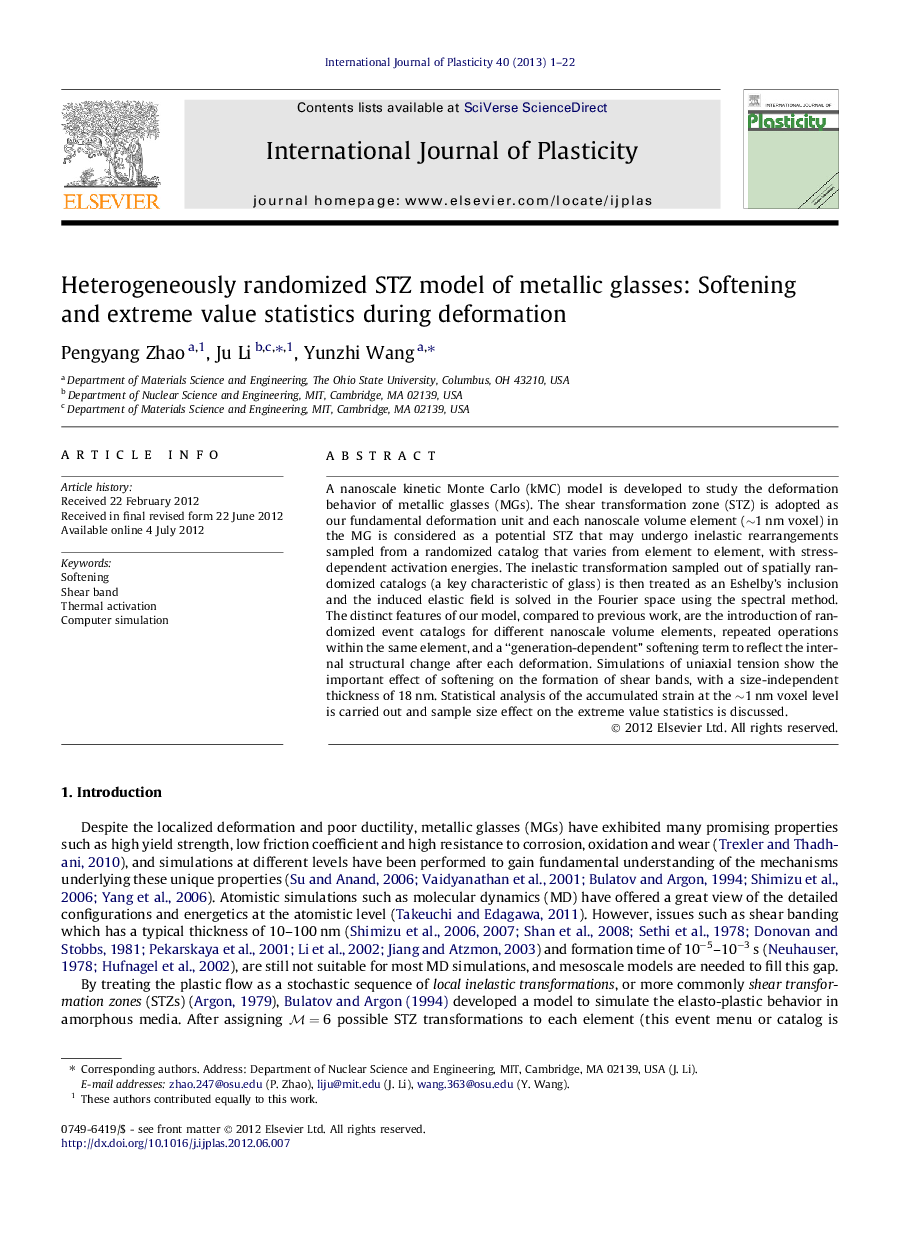| Article ID | Journal | Published Year | Pages | File Type |
|---|---|---|---|---|
| 786951 | International Journal of Plasticity | 2013 | 22 Pages |
A nanoscale kinetic Monte Carlo (kMC) model is developed to study the deformation behavior of metallic glasses (MGs). The shear transformation zone (STZ) is adopted as our fundamental deformation unit and each nanoscale volume element (∼1 nm voxel) in the MG is considered as a potential STZ that may undergo inelastic rearrangements sampled from a randomized catalog that varies from element to element, with stress-dependent activation energies. The inelastic transformation sampled out of spatially randomized catalogs (a key characteristic of glass) is then treated as an Eshelby’s inclusion and the induced elastic field is solved in the Fourier space using the spectral method. The distinct features of our model, compared to previous work, are the introduction of randomized event catalogs for different nanoscale volume elements, repeated operations within the same element, and a “generation-dependent” softening term to reflect the internal structural change after each deformation. Simulations of uniaxial tension show the important effect of softening on the formation of shear bands, with a size-independent thickness of 18 nm. Statistical analysis of the accumulated strain at the ∼1 nm voxel level is carried out and sample size effect on the extreme value statistics is discussed.
► A new mesoscale model is developed to study the deformation of metallic glasses. ► Structural softening is key in strain localization and the formation of shear band. ► A size-independent shear band thickness of ∼20 nm is revealed. ► Extreme value statistics reveals size effect and determines onset of final failure. ► Temperature rise in the center of shear bands is estimated to exceed hundreds of K.
